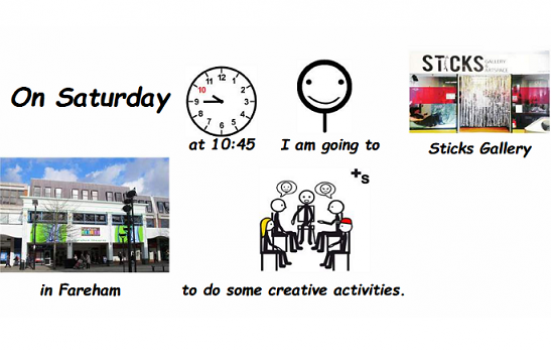Introducing safe spaces for people with sensory issues is key to creating accessible cultural venues, according to a new report.

Beth Davis-Hofbauer
Galleries should soften their lighting, avoid bright white paint and introduce chill-out spaces in order to become accessible for people with sensory disorders, a new report has advised.
The adjustments would give visitors control over how they engage with the sights and sounds of cultural venues, and reduce anxiety-inducing ambiguity and sensory overload.
“These changes would mean families and people with autism could actually visit galleries and museums,” artist Beth Davis-Hofbauer, the report’s author, told AP.
“It would open the world up for people with huge hidden problems and tackle a form of unseen segregation.”
Prioritising access
Davis-Hofbauer surveyed 49 families of children with autism and autistic adults, and interviewed professionals who work with people with profound and multiple learning disabilities and autistic artists. Her ‘Autism Matters’ report highlights challenges facing people with Autism Spectrum Disorder (ASD) and Sensory Processing Disorders (SPD) and suggests practical steps for cultural venues to become more inclusive.
Its publication follows a wave of inclusive events in the performing arts, such as relaxed performances staged by Theatre Royal Stratford East, Orchestras Live and the Royal Shakespeare Company. Similarly, West Yorkshire Playhouse published a guide to dementia-friendly performances last year, and a museum’s dementia care training programme has been rolled out nationally.
But the report finds attending galleries and private views is often “near impossible” for those with sensory issues, and the vast majority of survey respondents felt galleries and museums need to do more to become accessible for people with ASD or SPD.
“I think galleries are incredibly unfriendly to people because they’re made to best show off the art, not to be as accessible as possible,” Davis-Hofbauer continued.
“Galleries do have one-off autism-friendly events, and specific groups for children with autism, but these still don’t fundamentally address key access issues.
“When galleries think about access, they focus on being accessible for people with physical needs – rather than mental needs.”
Practical steps
In response, Davis-Hofbauer outlines a series of practical steps to mitigate sensory overload.
A key suggestion is for galleries to introduce sensory spaces in which sights, sounds and scents can be engaged with at the visitor’s own pace. The report advises venues to anticipate that some people will inevitably find their visit stressful, and to introduce a safe space where a meltdown would be acceptable.
Other suggestions include:
- Publishing and providing ‘social stories’ – short descriptions of a particular situation, event or activity with specific information about what to expect in a situation and why.
- Using lower level lighting to address the ‘sub visible’ flicker in fluorescent lighting. Or, where this is not possible, using light filters and maximising natural light.
- Introducing visual aids to accompany exhibitions and displays, which could be based on the ‘Picture Exchange Communication System’.
- Increasing the number of touch screens, giving individuals the control over the flow of information.
In addition, the report suggests galleries use noise-cancelling headphones for vocal guides, as although ear defenders are useful, they present a barrier to engaging with art.
“These changes can be made with virtually no budget,” Davis-Hofbauer added. “If you can’t change the lighting, you can get light filters. You can get free alternatives for social stories, and noise cancelling headphones are already in use in lots of cultural spaces.
“I don’t think there’s a cost barrier.”




